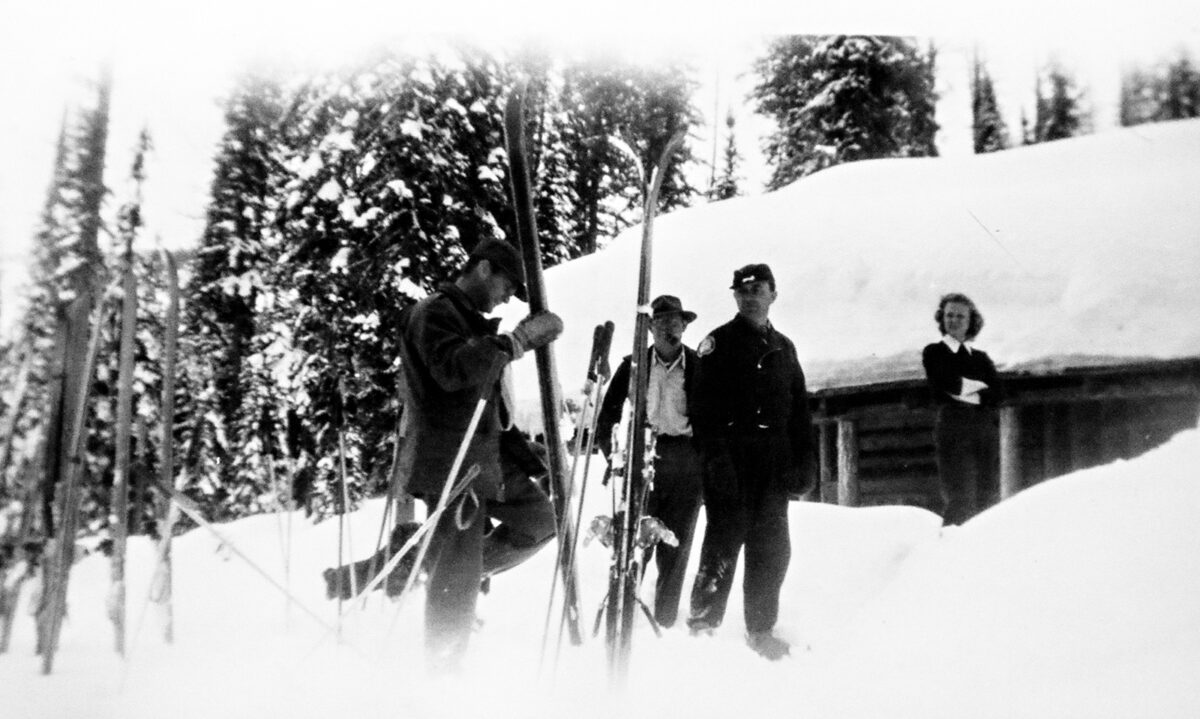‘Raising Hell Roaring’ to Showcase Big Mountain’s Rich History
The Whitefish Ski Museum on Dec. 12 will host an encore presentation about the inception of skiing on Big Mountain, using archival 16-mm film footage, photos, letters and firsthand interviews to account for eight decades of Flathead Valley ski culture
By Tristan Scott
When Tim Hinderman and his merry band of Big Mountain history fanatics set out to create a documentary about the ski area’s 77-year saga, they realized that winnowing down the archival film footage and interviews they’d amassed into a single feature-length film was an impossible task.
“When we got down to editing it, we had two hours of material that only got us as far as 1950,” said Hinderman, the director of the Whitefish Ski Heritage Museum, and the son of Whitefish ski pioneer and long-time Big Mountain Ski School director Karl Hinderman. “So, what we’re showing is Chapter 1 of the Big Mountain story.”
The Big Mountain story as rendered in Hinderman’s capable hands will be told this Thursday, Dec. 12 as a feature-length multimedia presentation called “Raising Hell Roaring: The Big Mountain Story,” which chronicles the annals of skiing in northwest Montana — from Big Mountain to Logan Pass and all the way up to the Cabinets, stretching from the early 1930s through the millennium.
Captured on 16-mm film, the footage depicts locals learning to use vintage skis and gear to ascend and descend Big Mountain. Although “Raising Hell Roaring” premiered last spring, selling out both showings. Hinderman said he’s bringing it back by popular demand after scores of residents bemoaned missing their opportunity to see the film.
The film derives its name from Hellroaring Creek, the wellspring for much of Big Mountain’s nascent history, where the region’s first skiers built a tiny cabin with a barrel stove that burped out heat.
Those early skiers included Lloyd “Mully” Muldown, Lyle Rutherford and Ole Dalen, who began climbing the Big Mountain in the 1930s, wearing squat leather boots and wool pants while inching their way uphill, fur-skinned climbers strapped to their wooden planks so they wouldn’t slip back down.
In 1935, the men, along with about a dozen volunteers and a few government mules, hammered away on the mountain’s first ski cabin, a rustic hut that provided cozy quarters for eight. When the local clergy grew nervous about men and women cohabitating in the forest, the friends mounted an effort to spearhead a second cabin the following winter. The U.S. Forest Service permits they obtained to build the Hellroaring Ski Cabins were the first recreational permits issued in the region.
The original Hellroaring Ski Club was born.

The rules to the cabin, handwritten by Mully, the club’s president, were straightforward, requiring guests to pay one dollar per night in order to help the members to defray expenses. Adult memberships to the Hellroaring Ski Club cost $10 annually, while junior memberships cost $5.
By 1937, the club’s members had scabbed together a rope-tow system that was as much a work of art as a working ski lift. A few Model T wheels served as the rope-tow sheaves, the remnants of which are still girded to an old larch, while a logging rope, a vintage car engine and a handful of gears turned the grueling hike to the top into a finger-burning glide through woods thicker than dog hair.

In addition to articulating this history, the multi-media event on Thursday includes an oral history and slideshow delivered by local legend Pat Muri, who befriended a family in Libby where a similar skiing renaissance was taking place eight decades ago.
“They had a similar skiing movement to the one Mully started here, and they had a whole carousel of slides from the late 1930s and early 1940s of people skiing in the Cabinets and on Logan Pass,” Hinderman said. “We have also intereviewed a bunch of the old-timers and have audio clips and film. We have an interview of one woman who remembers skiing on Big Mountain’s inaugural opening day in 1947. We rolled it all together, and that’s what we’re showing people.”
“Raising Hell Roaring” will play at the Whitefish Performing Arts Center on Dec. 12. Doors open at 6:30 p.m. with the presentation at 7 p.m. Tickets are $20 for adults and $15 for students, military and seniors and can be purchased online at whitefishskimuseum.org.